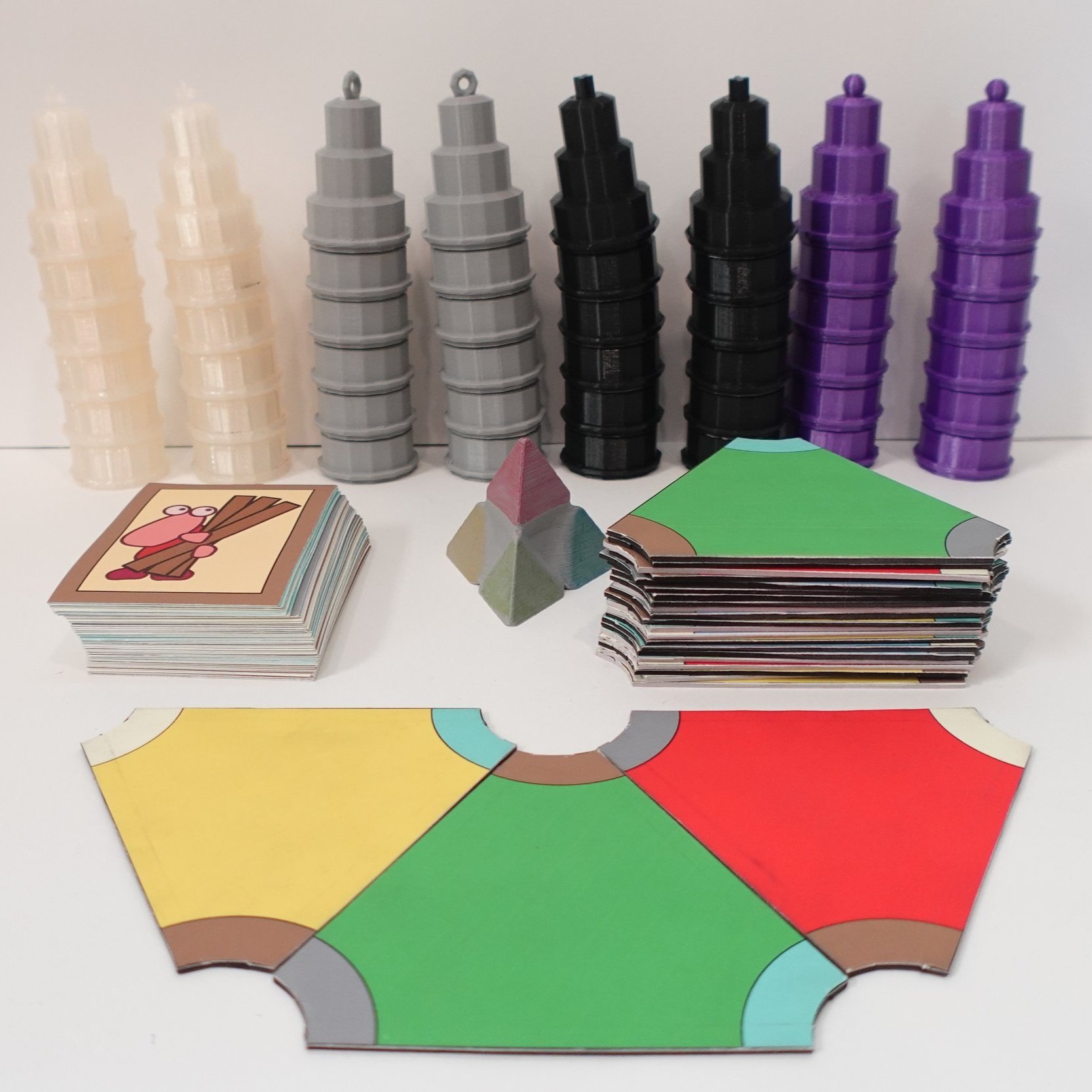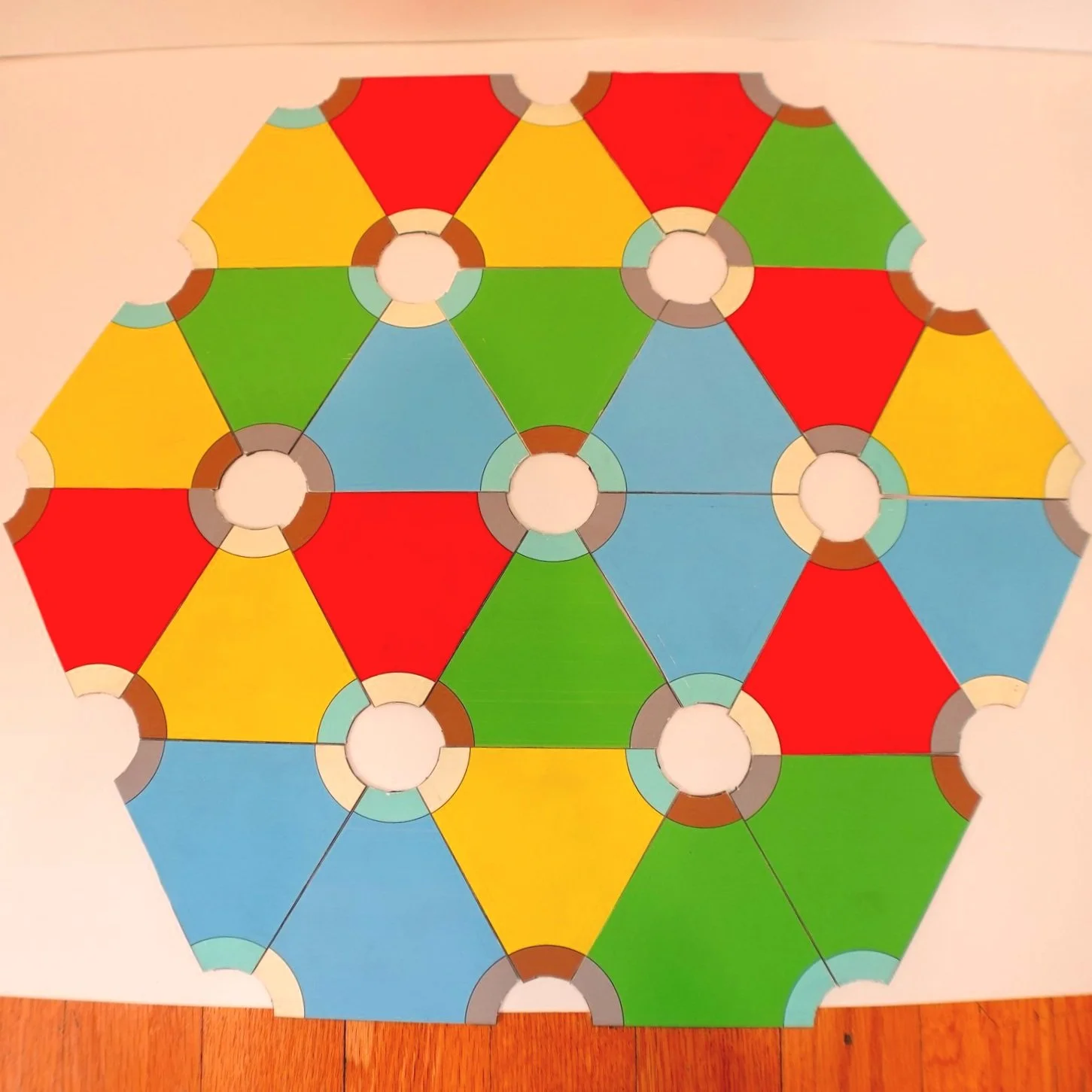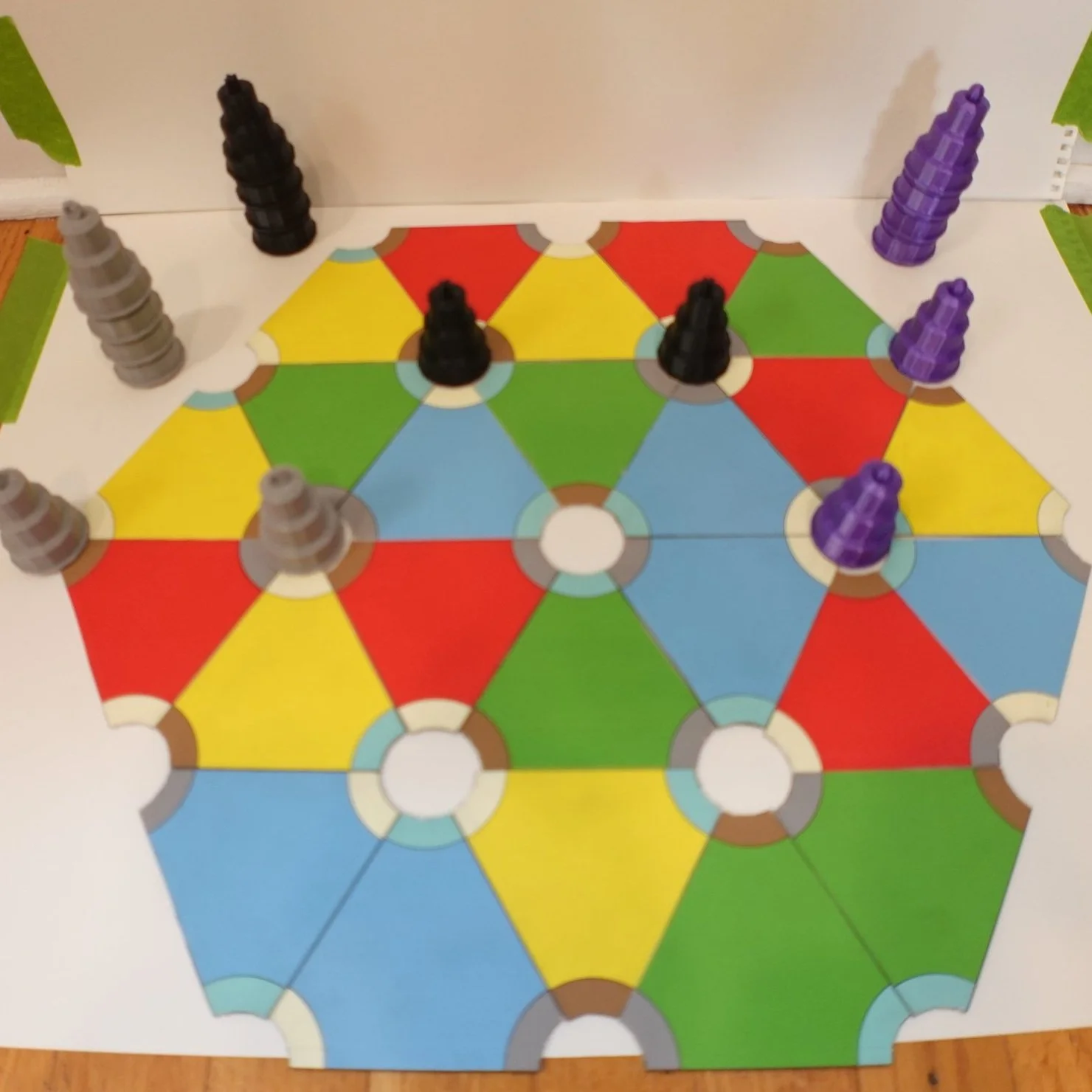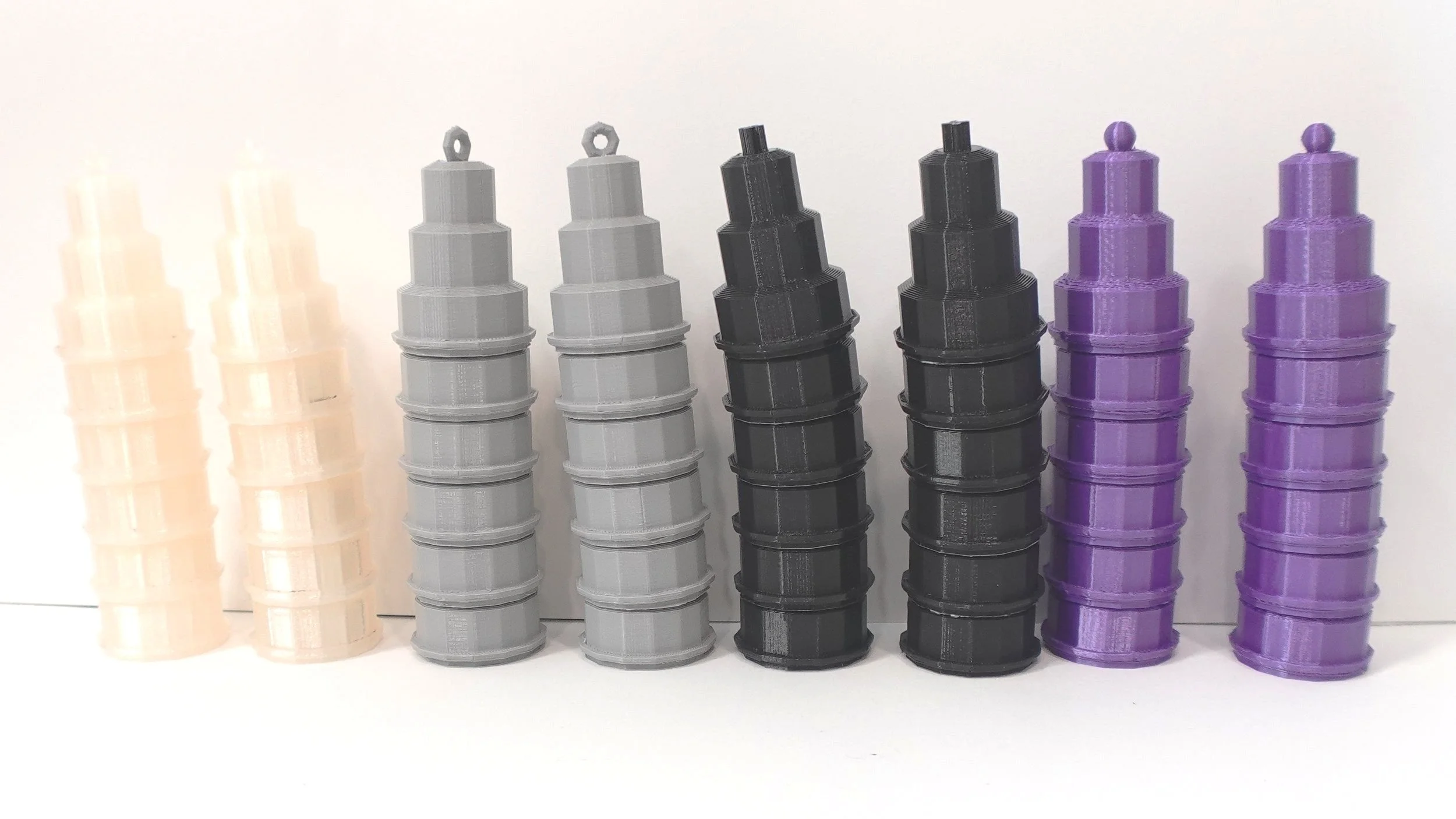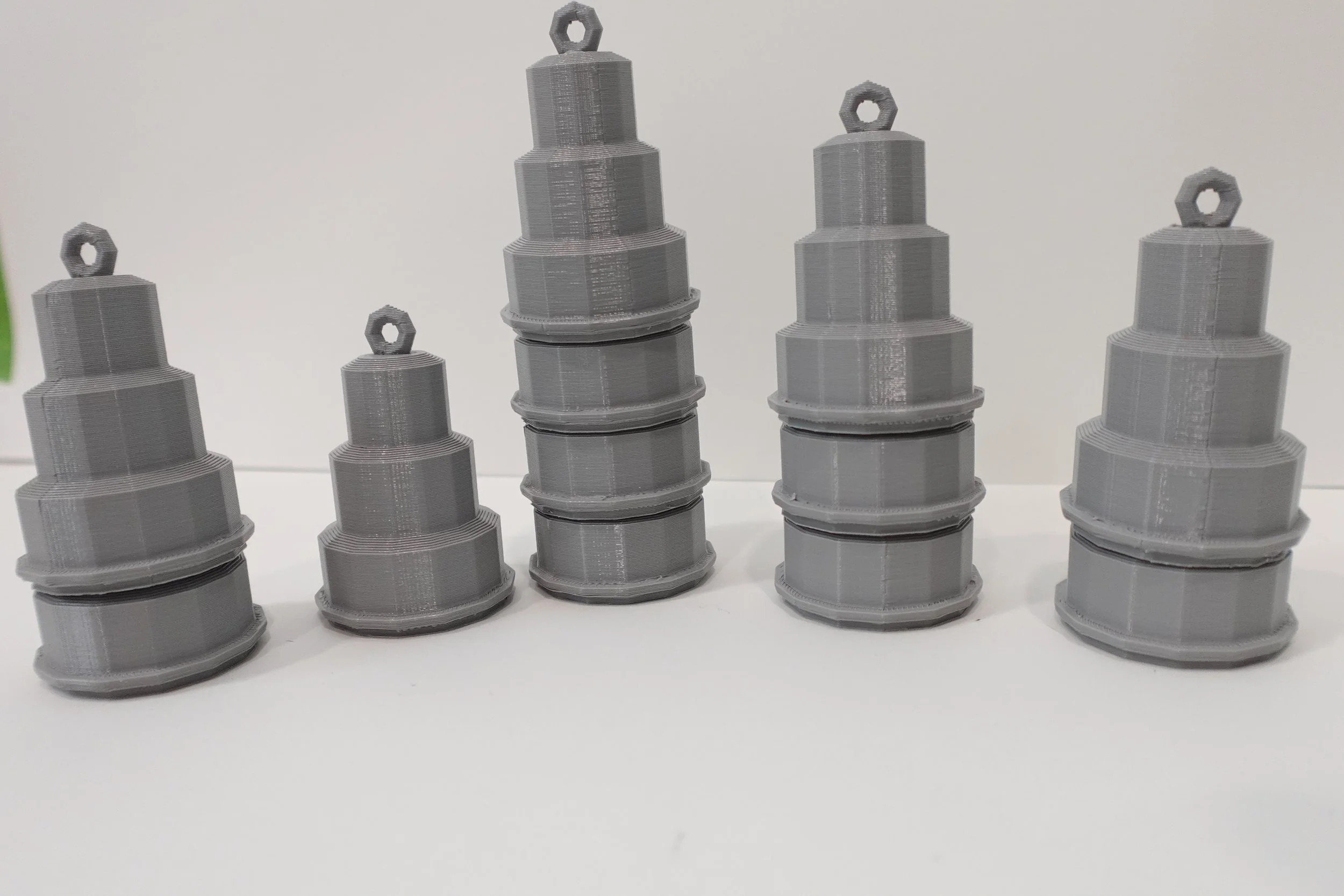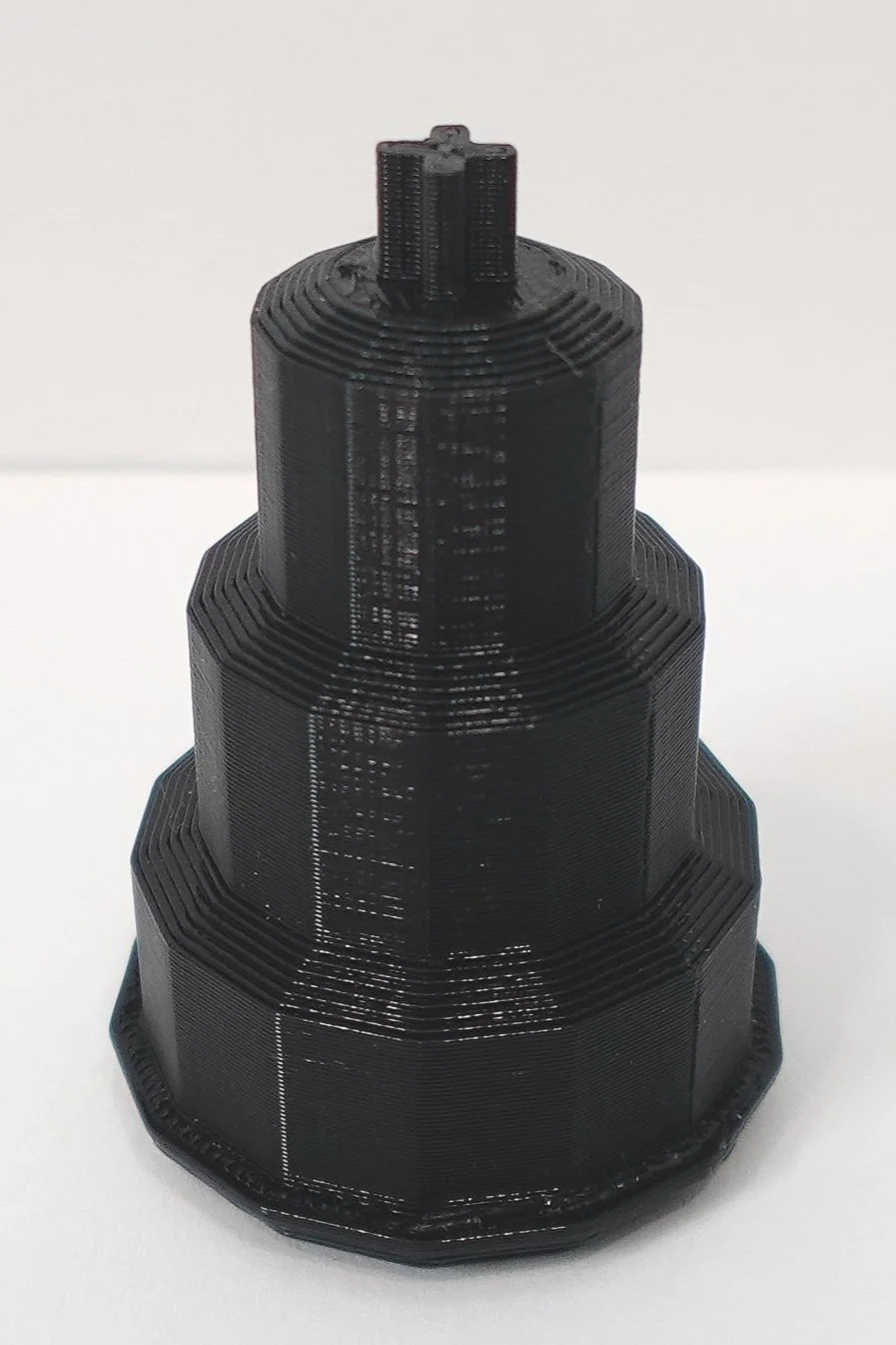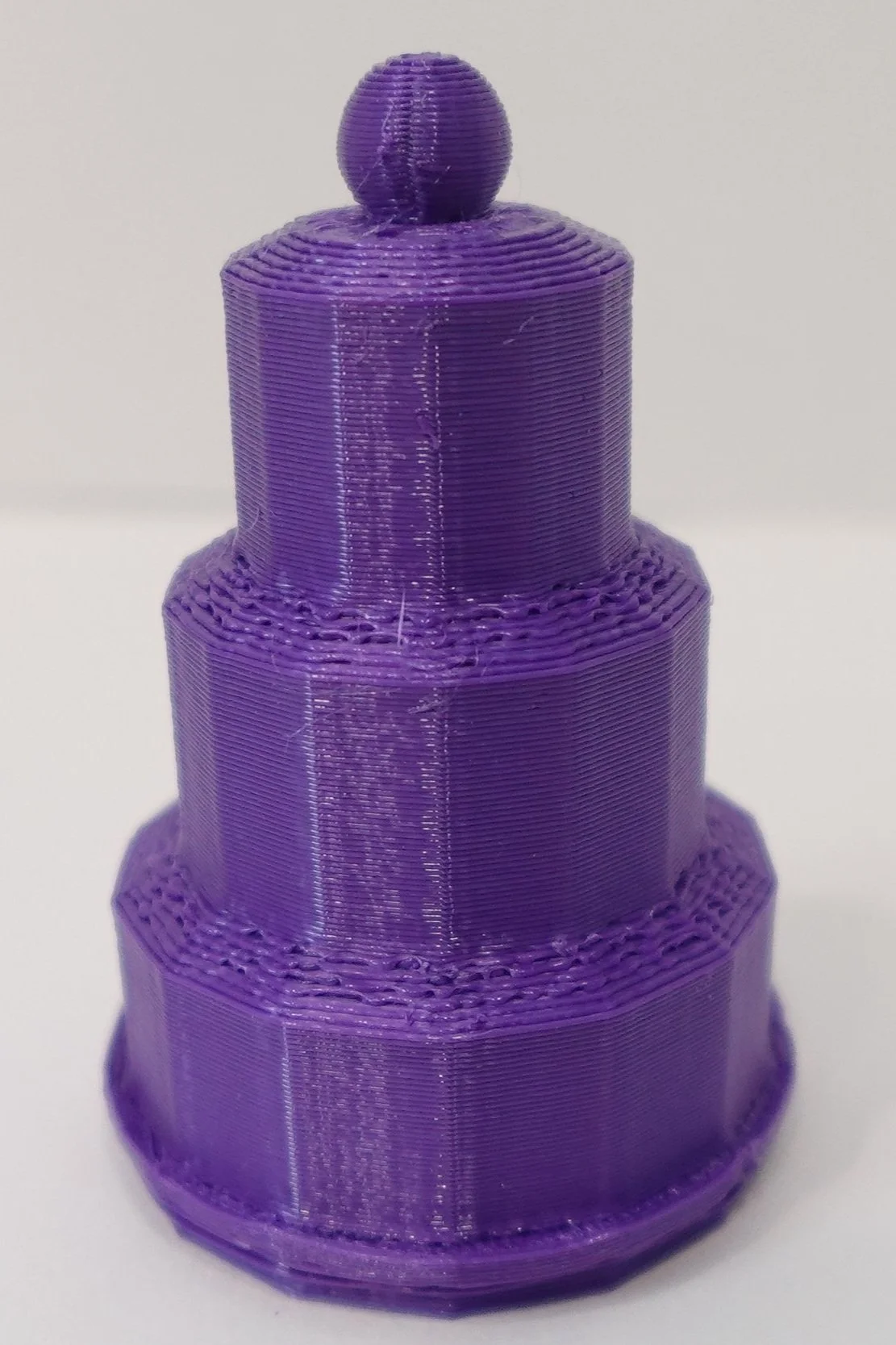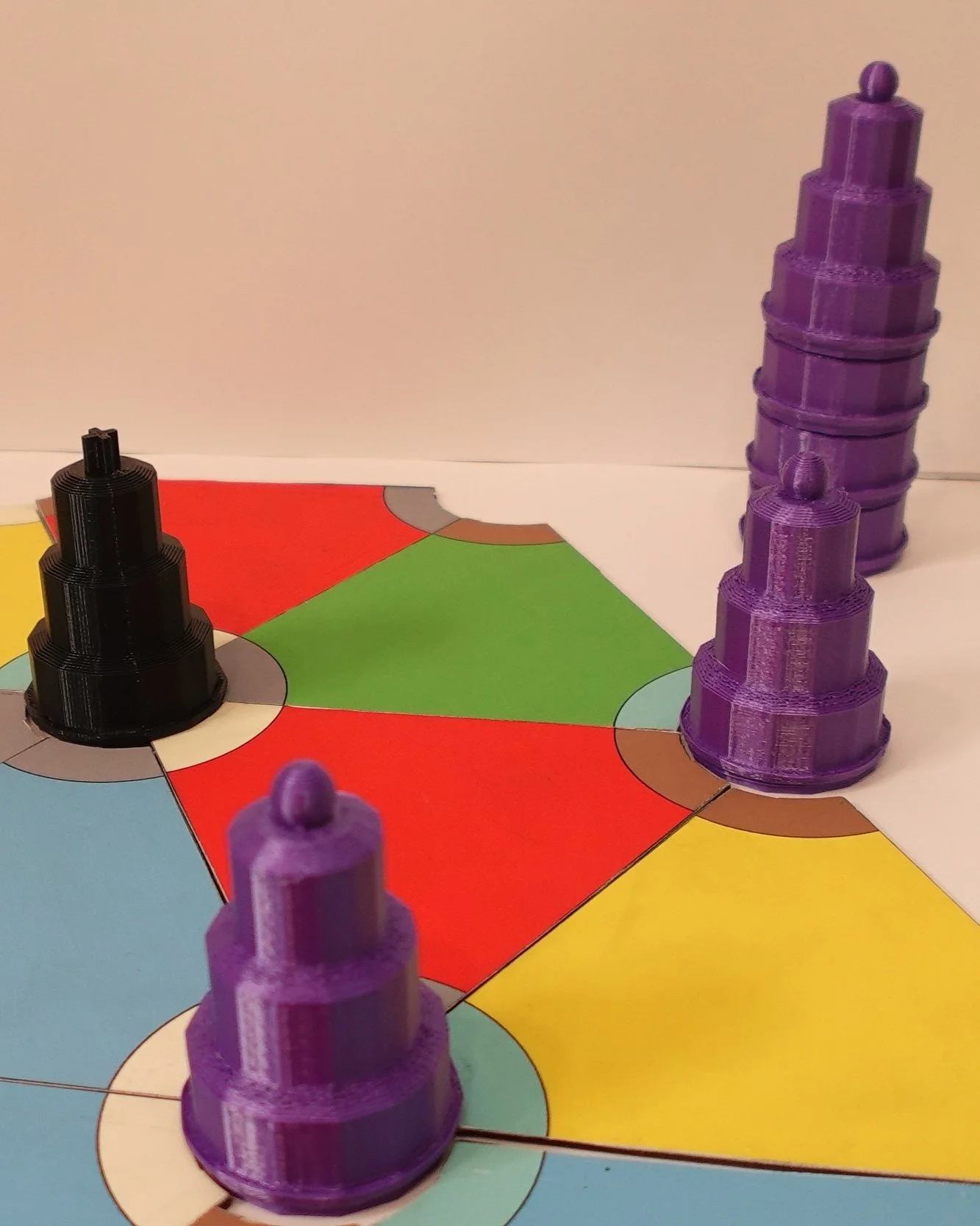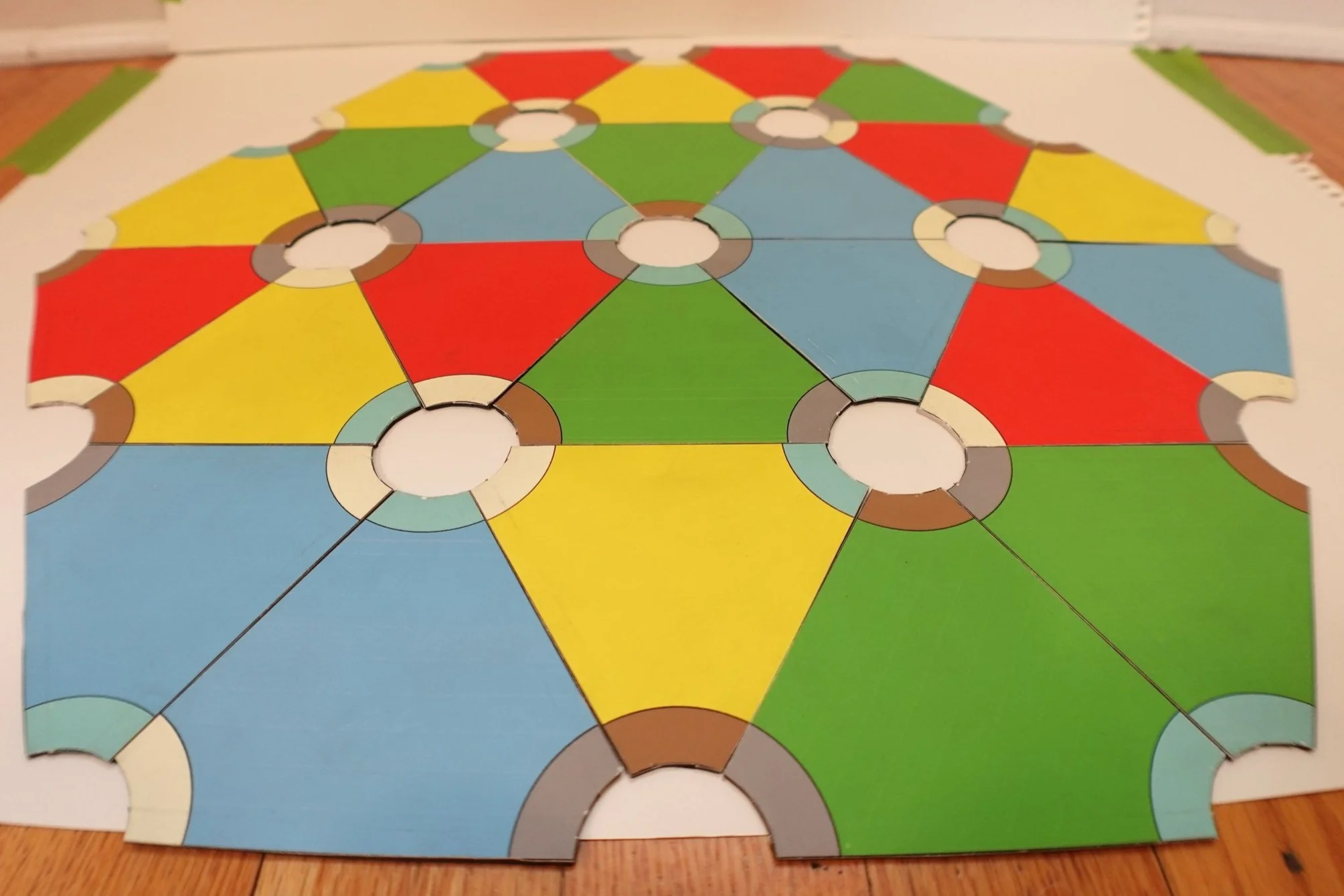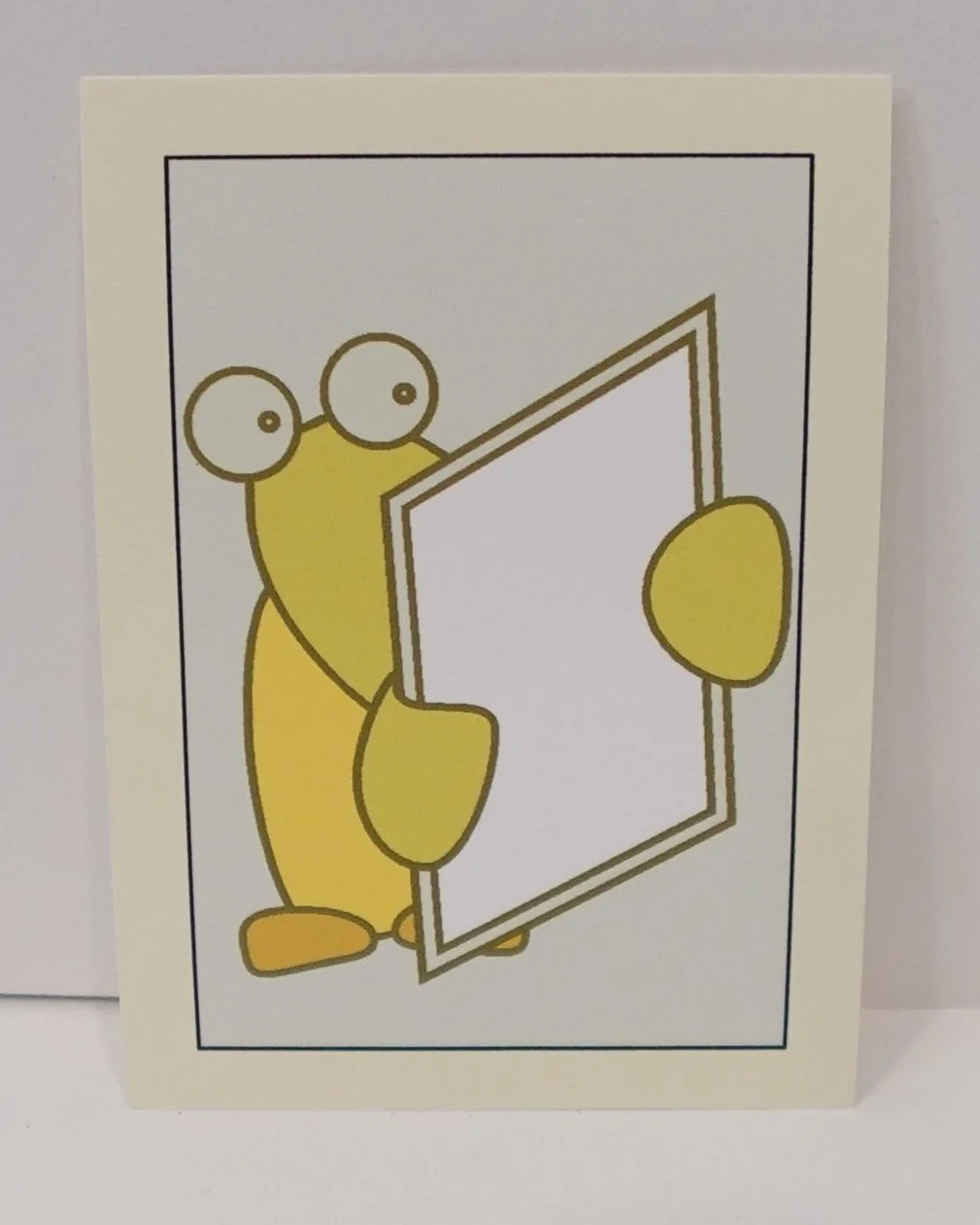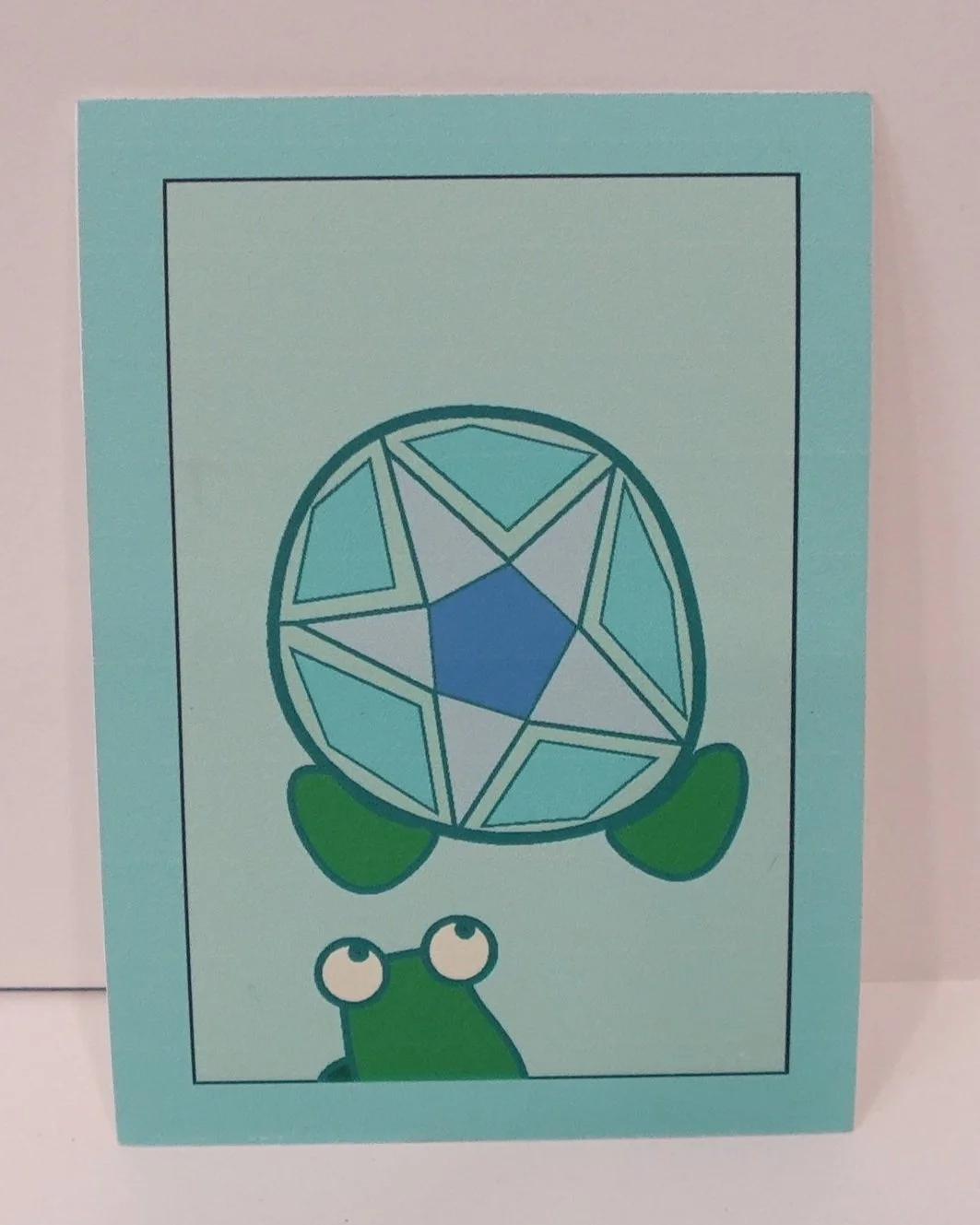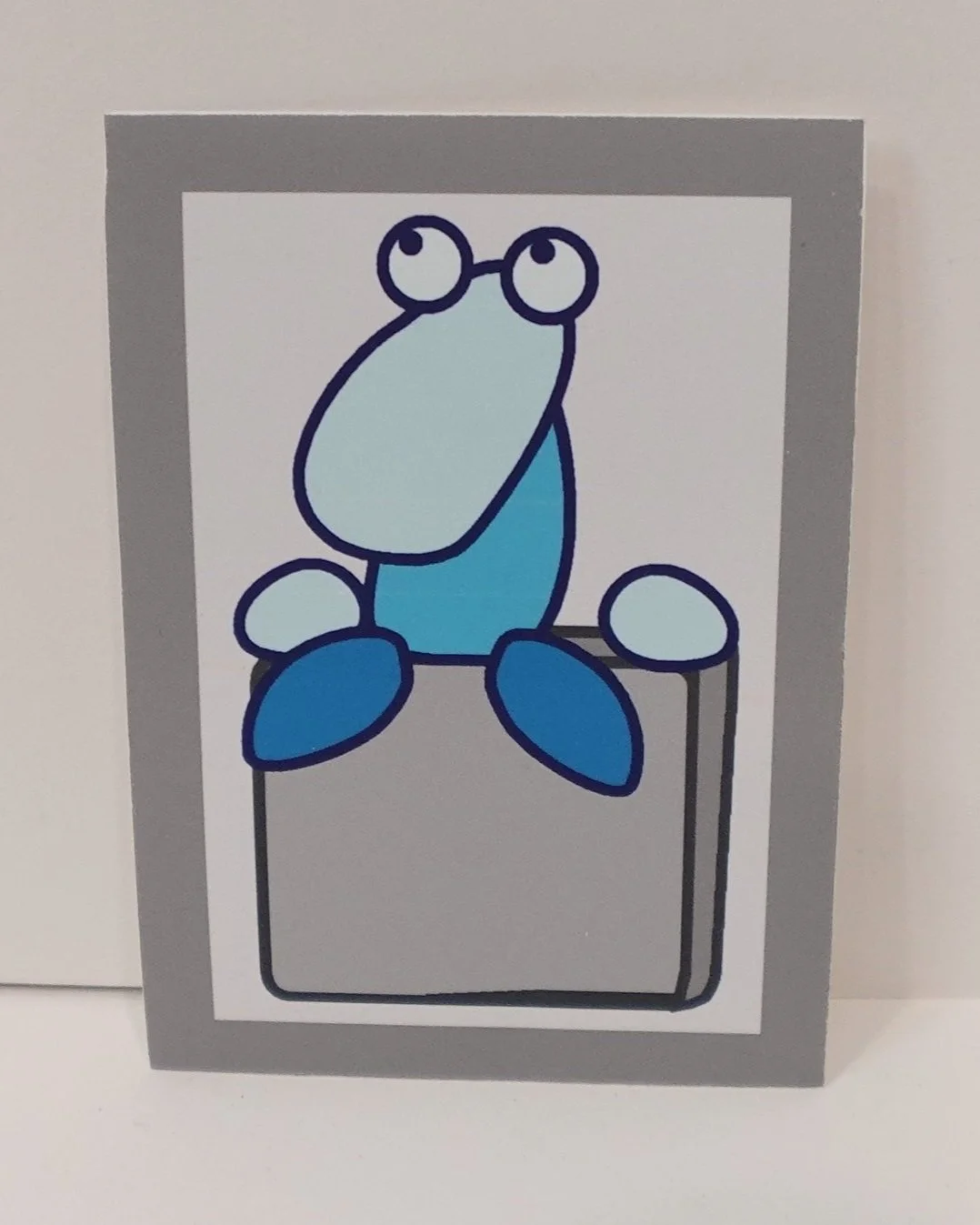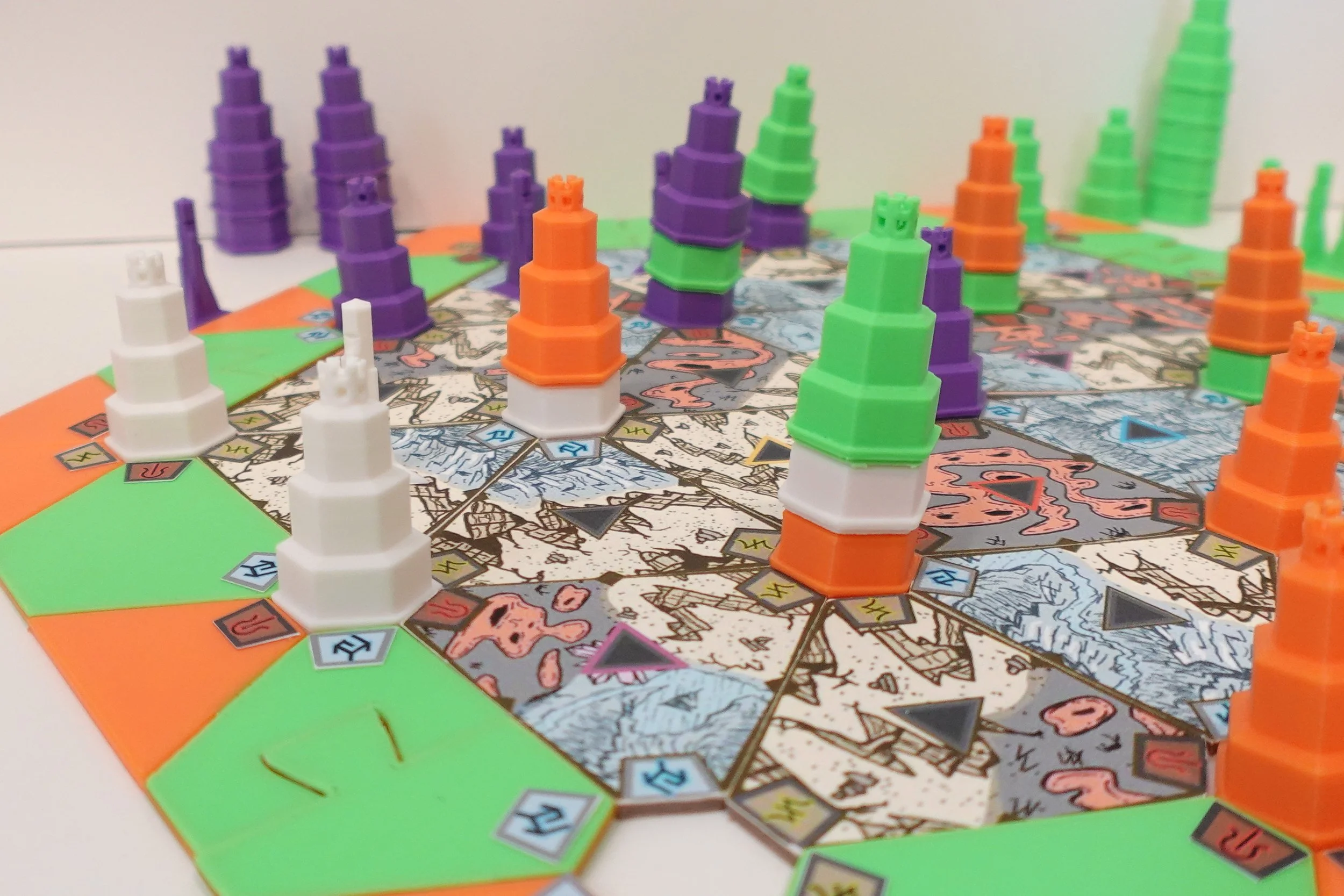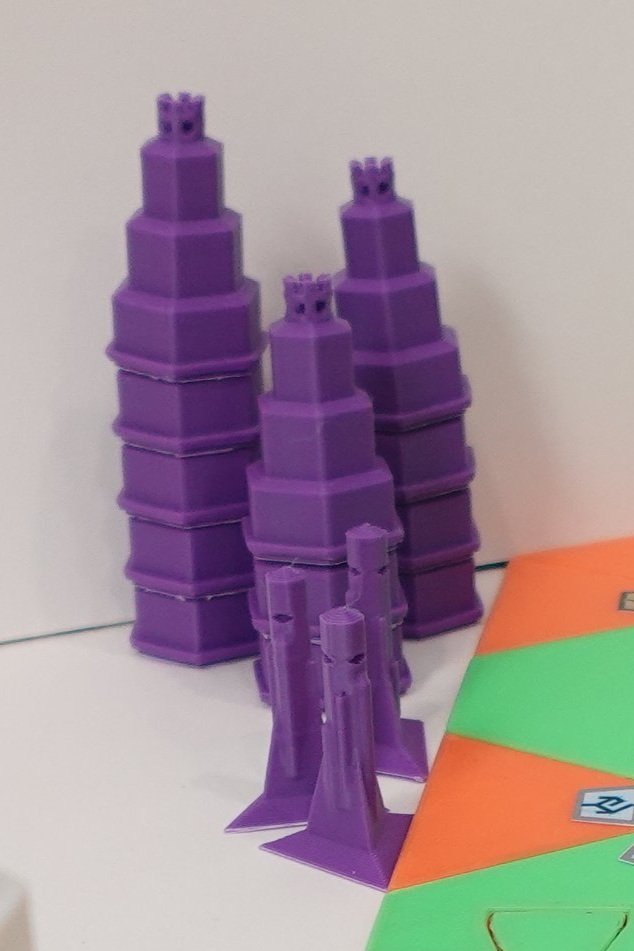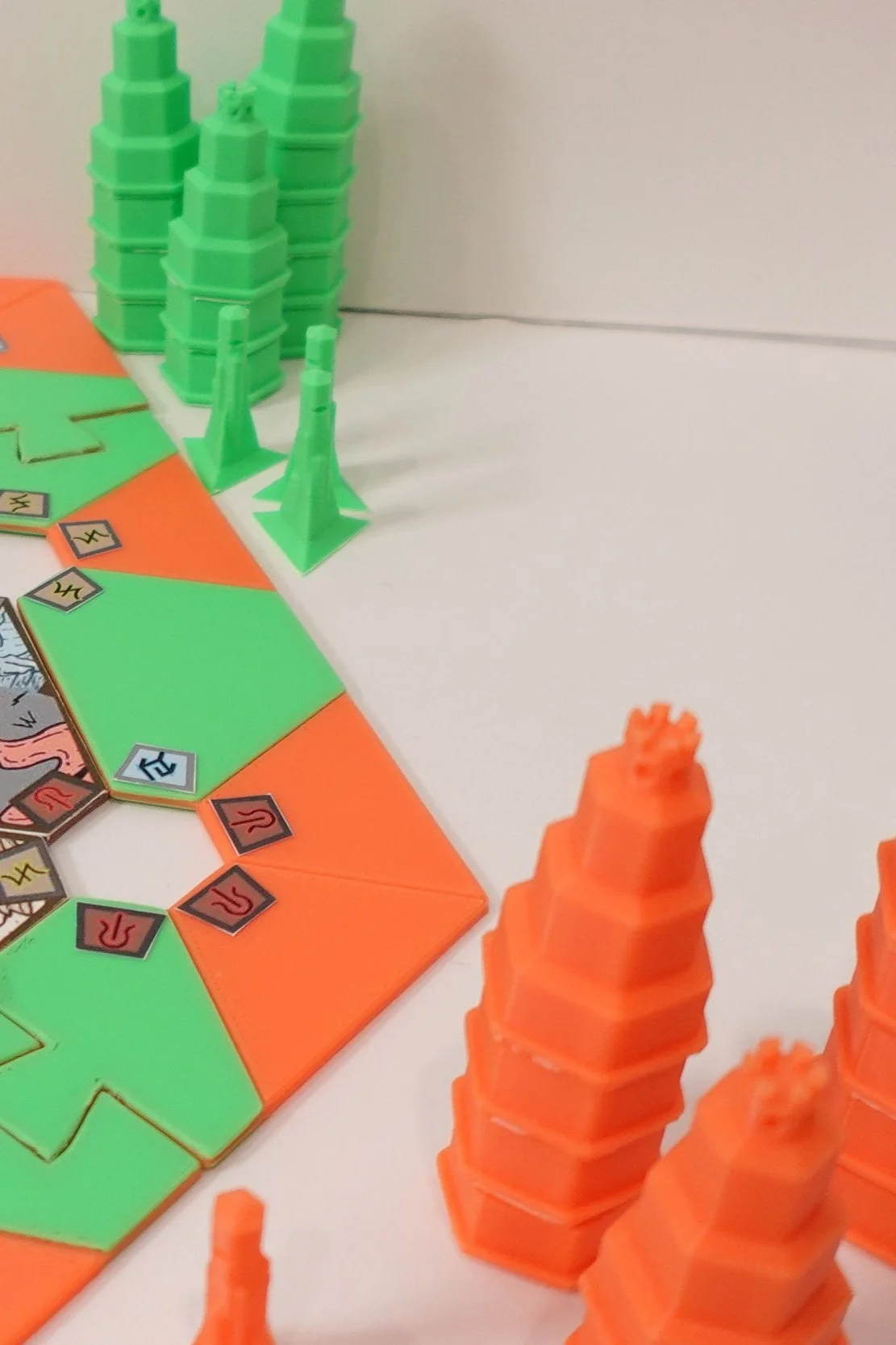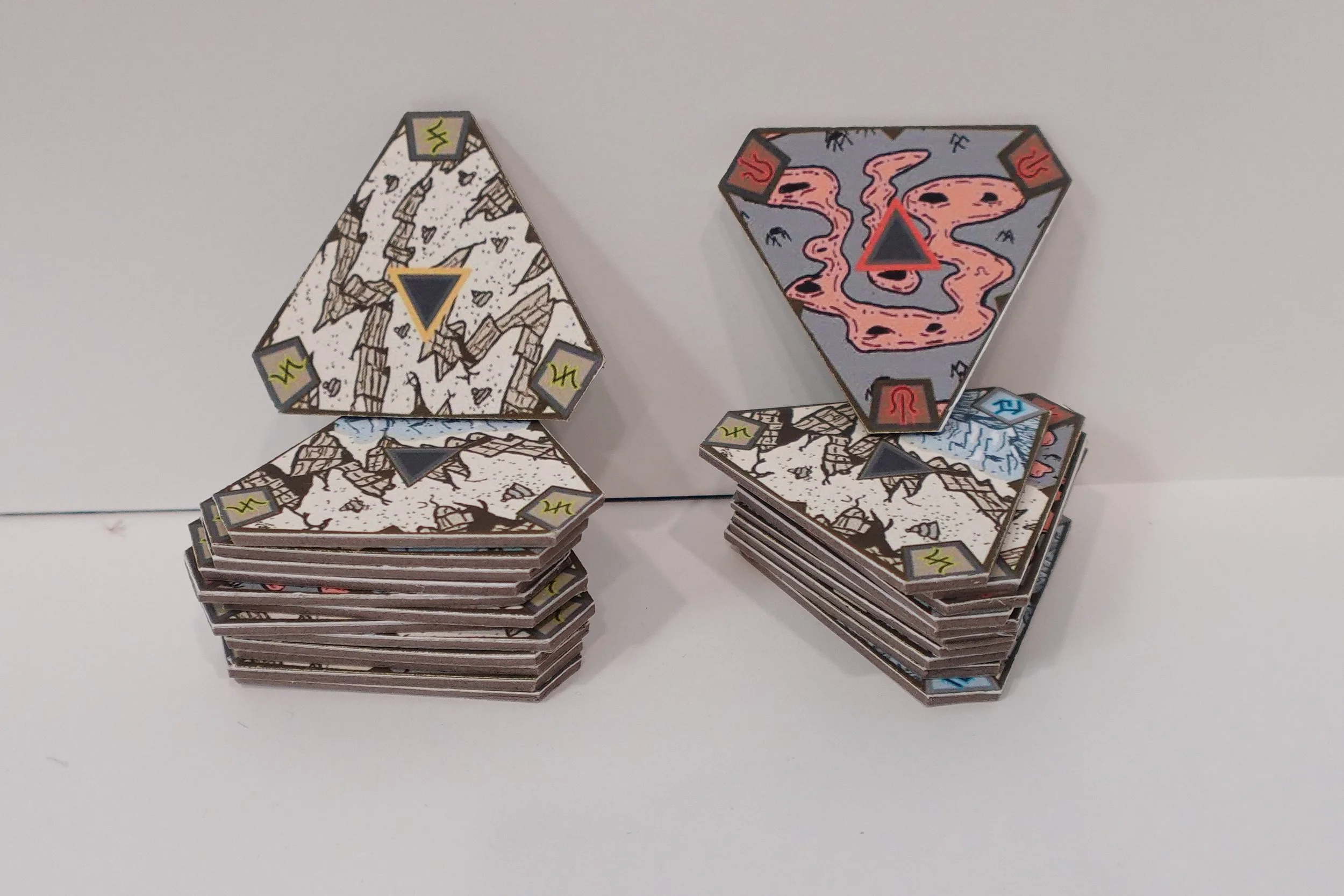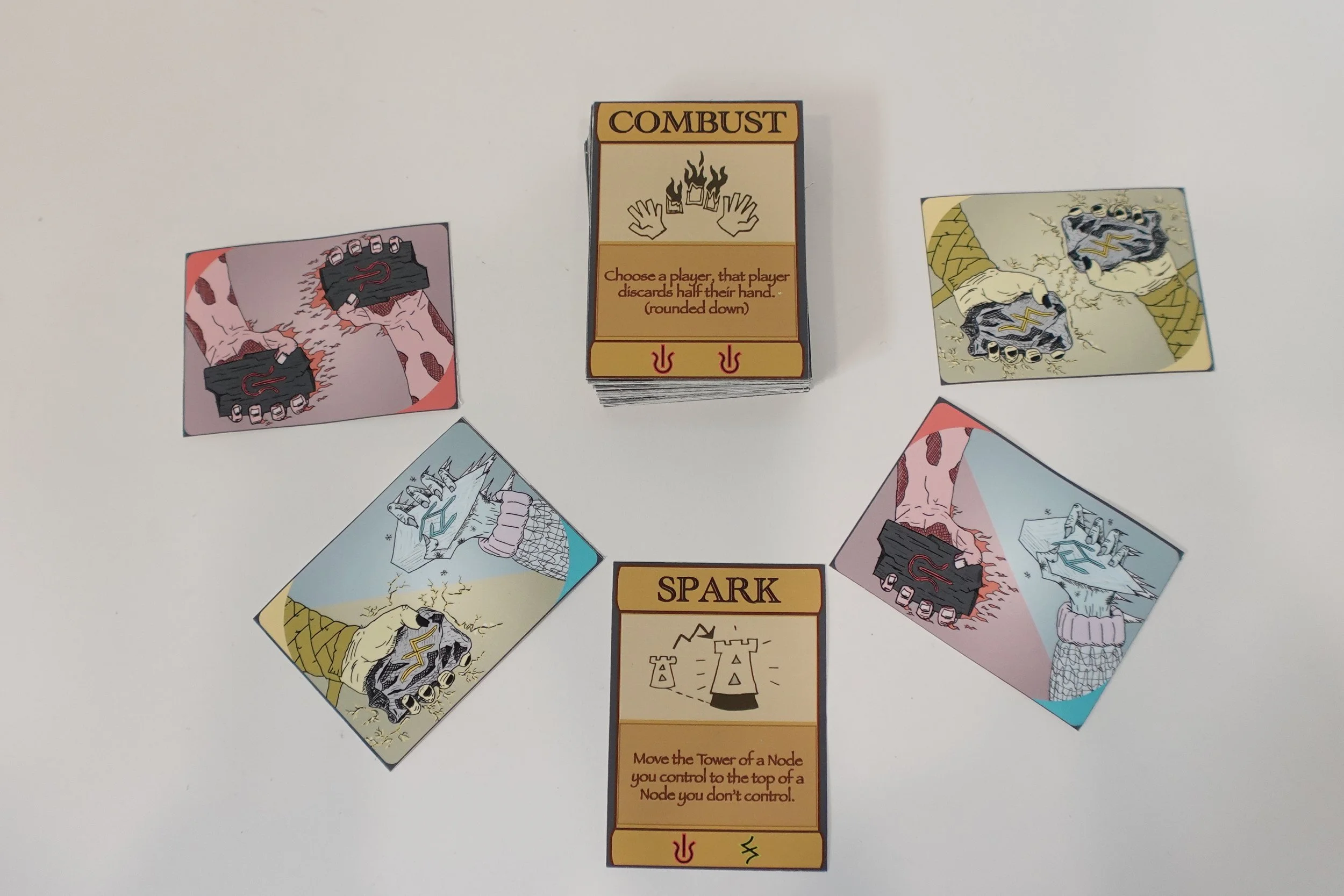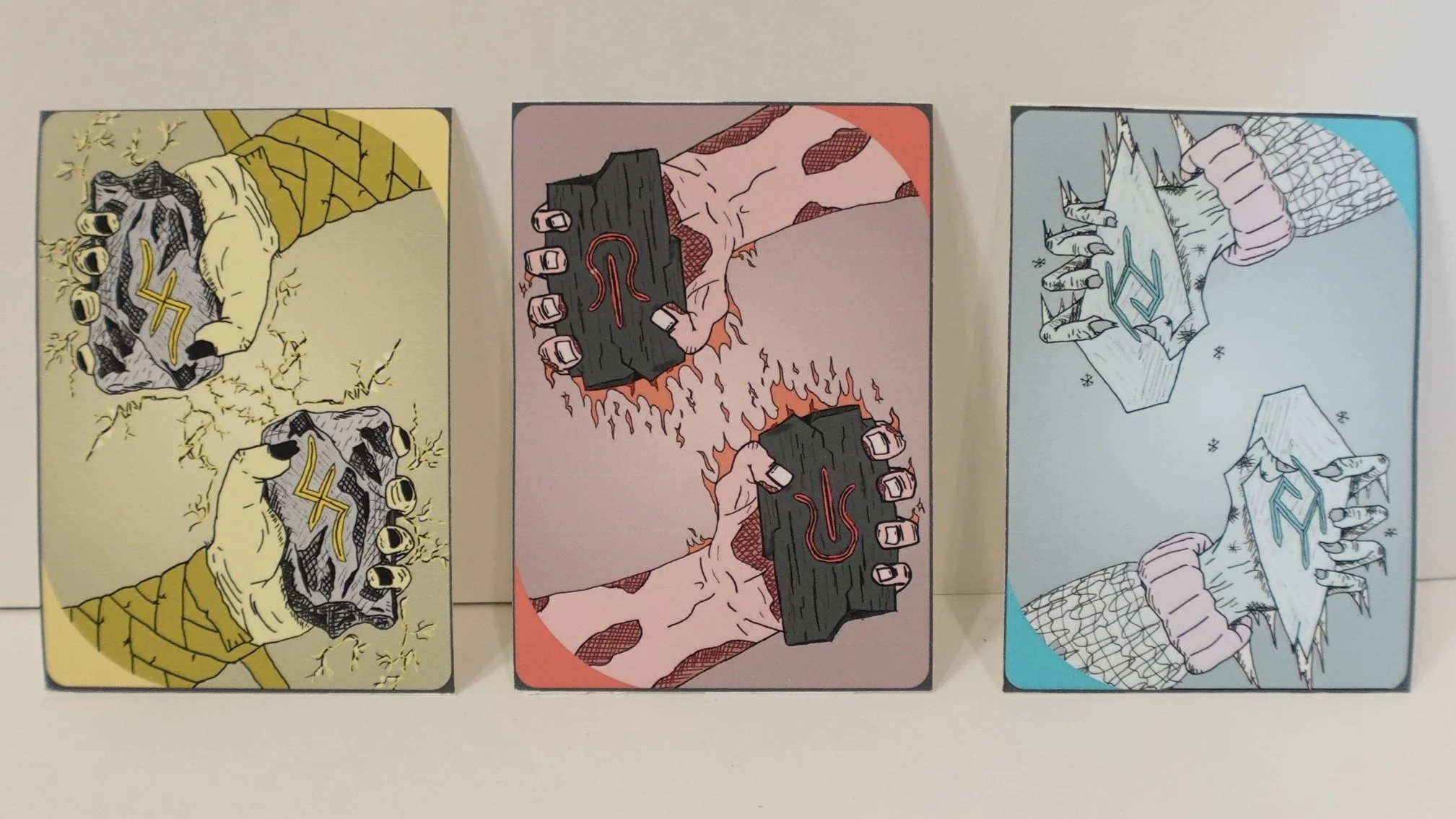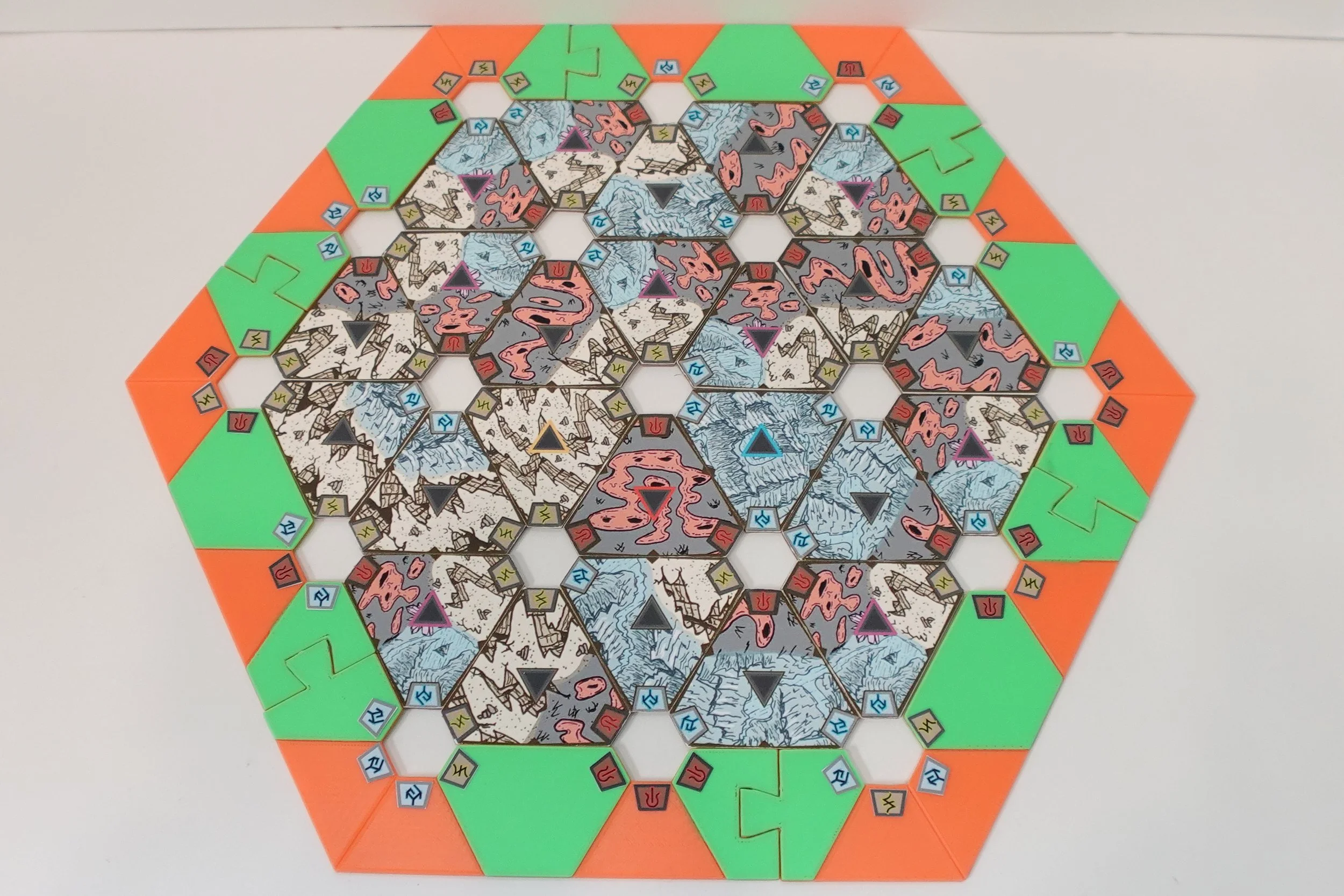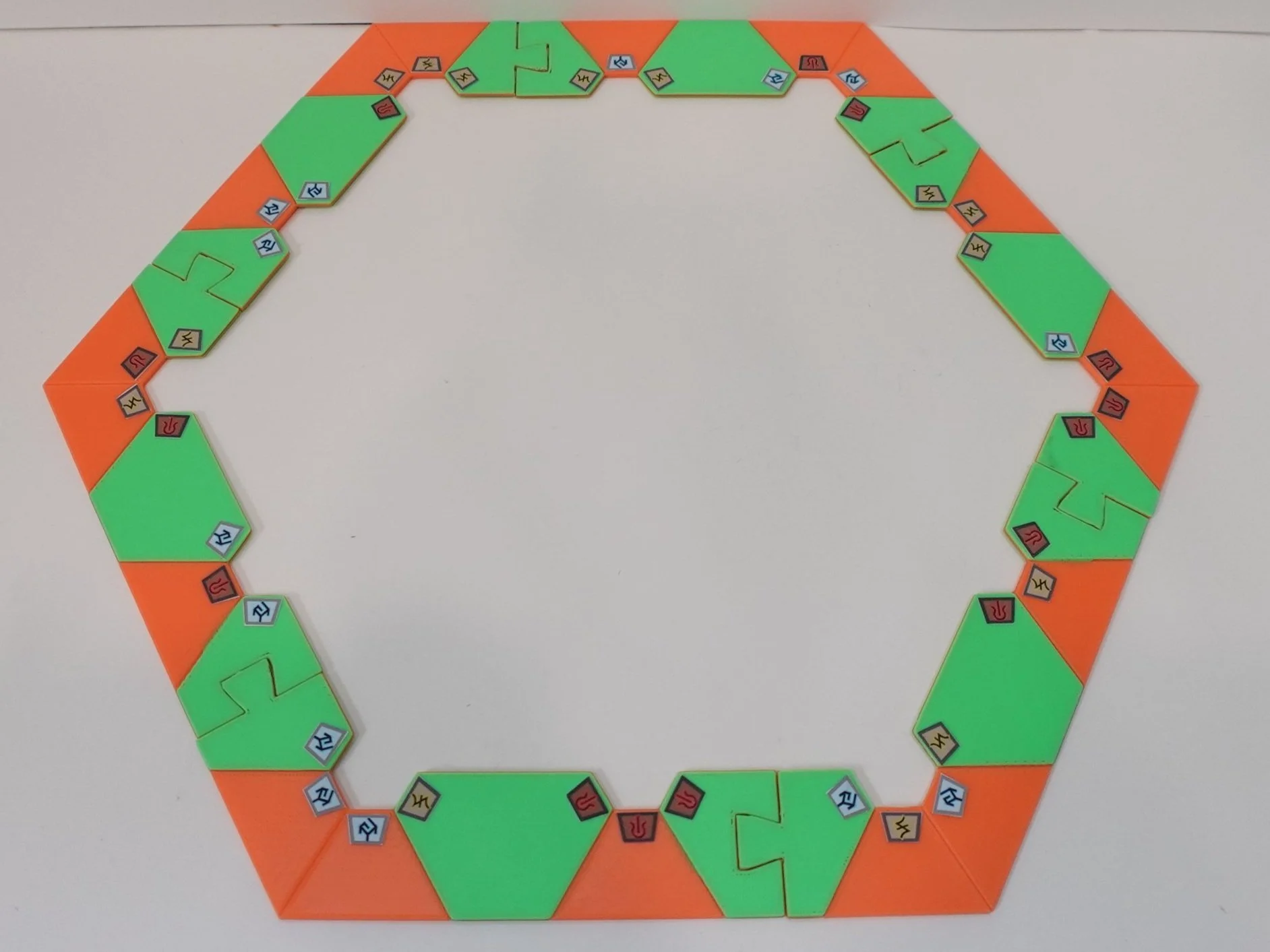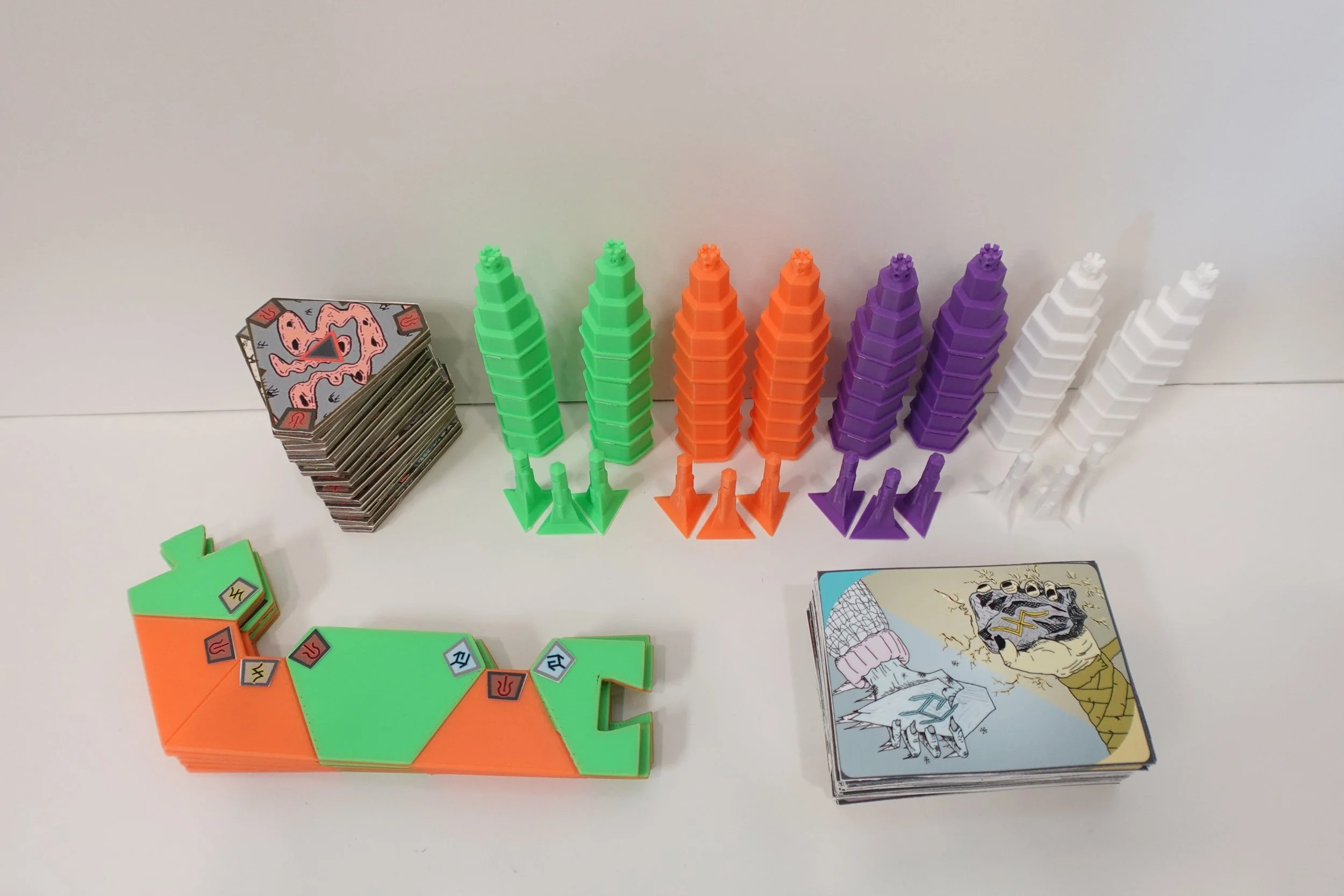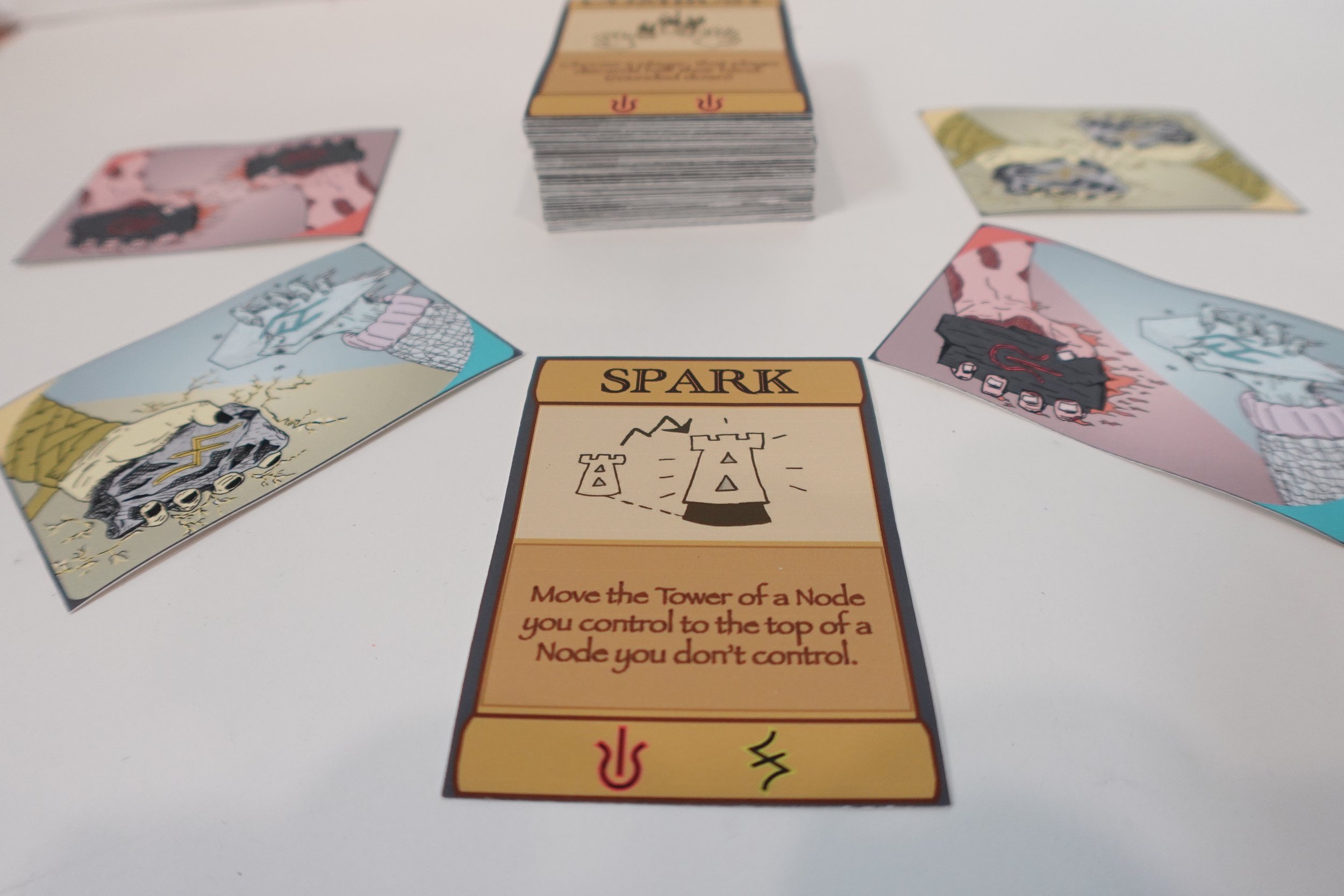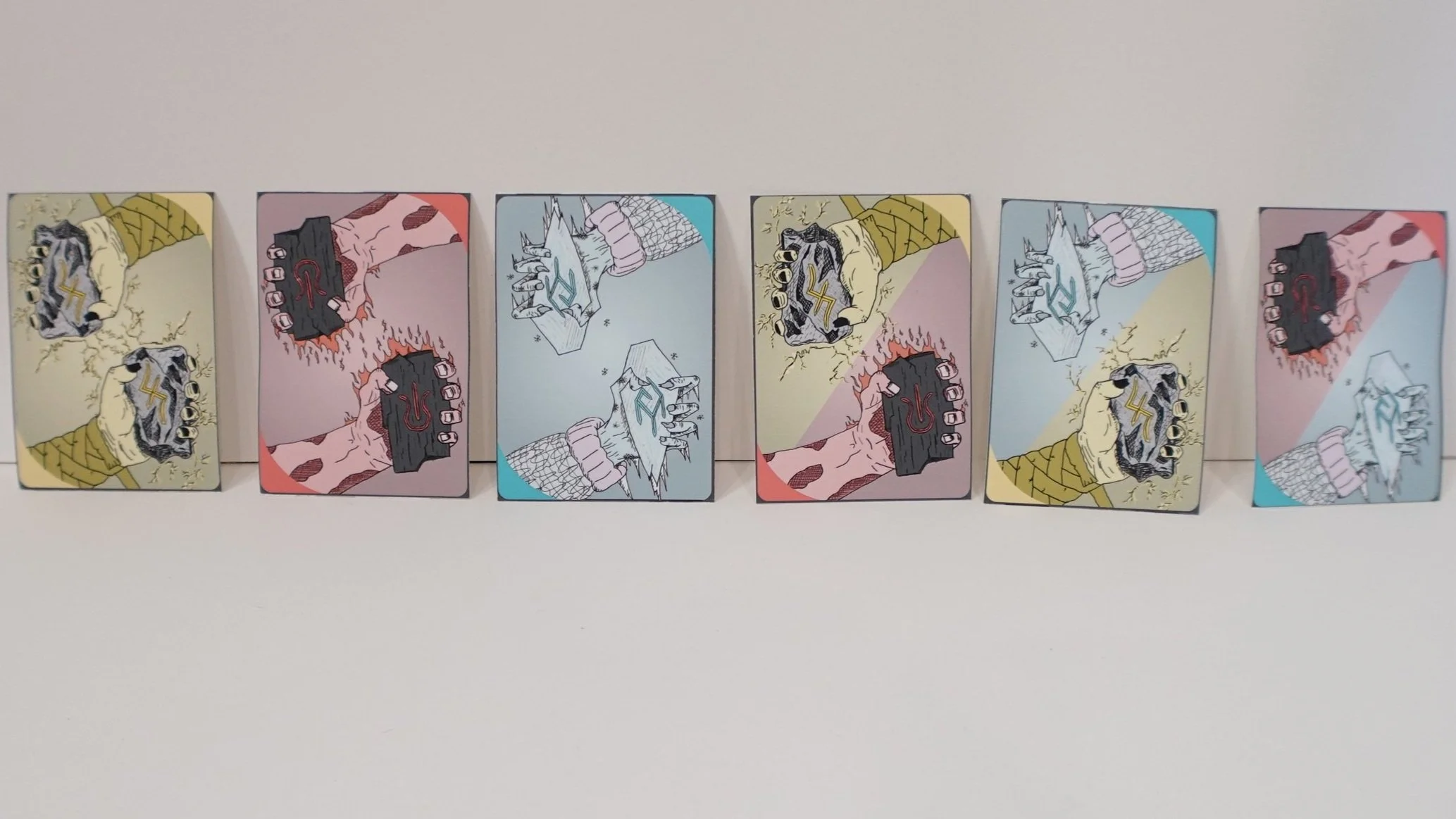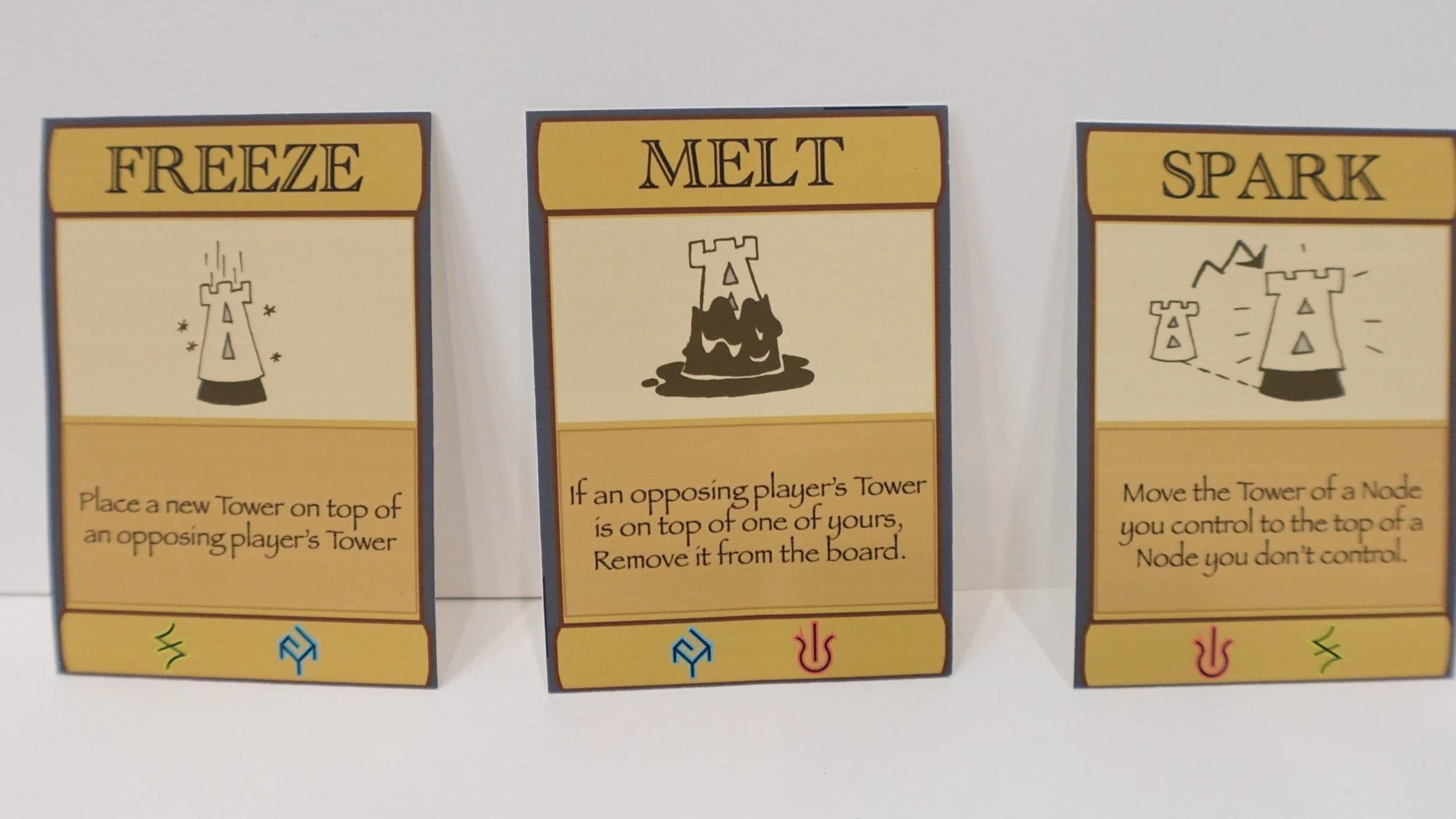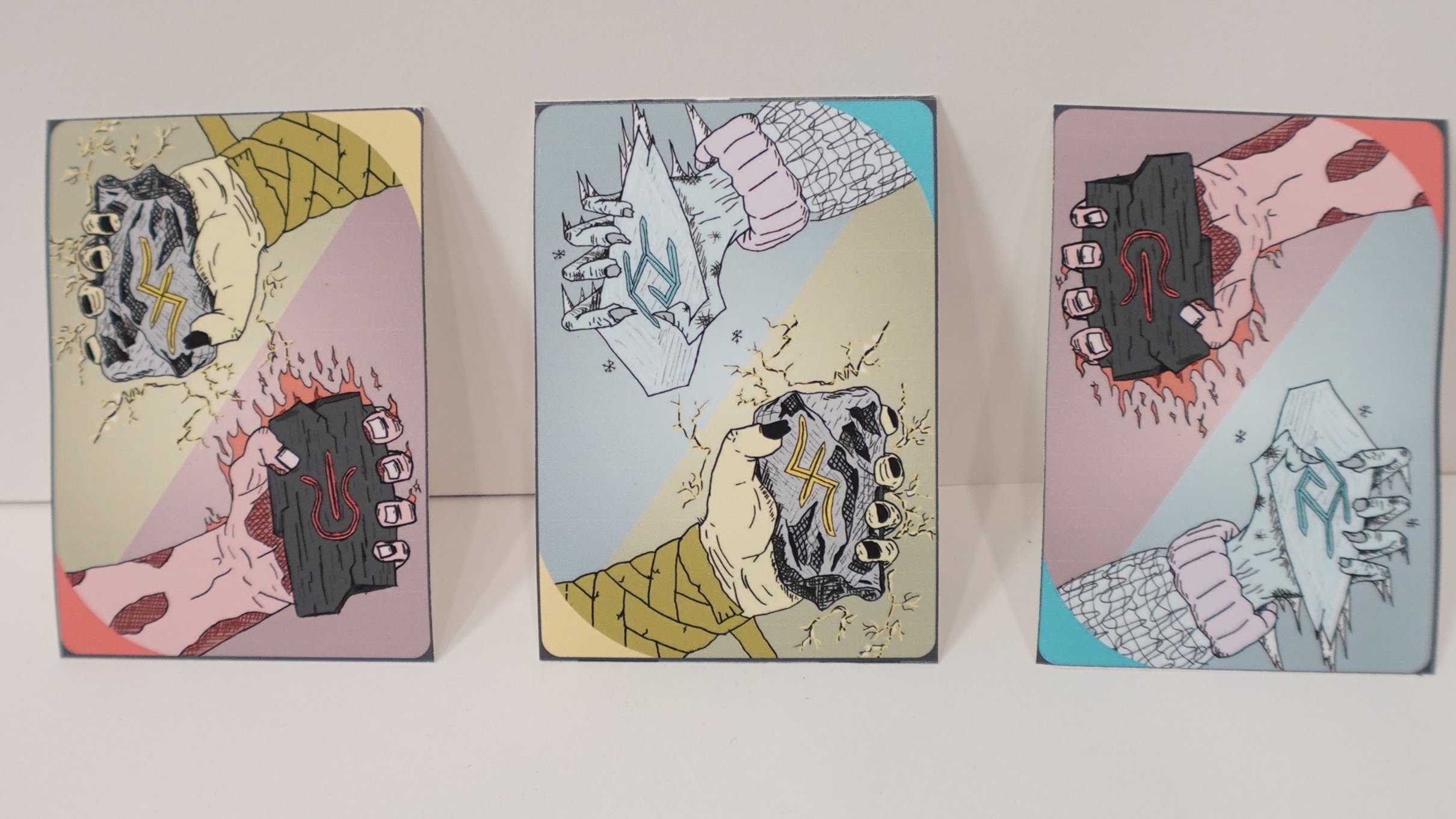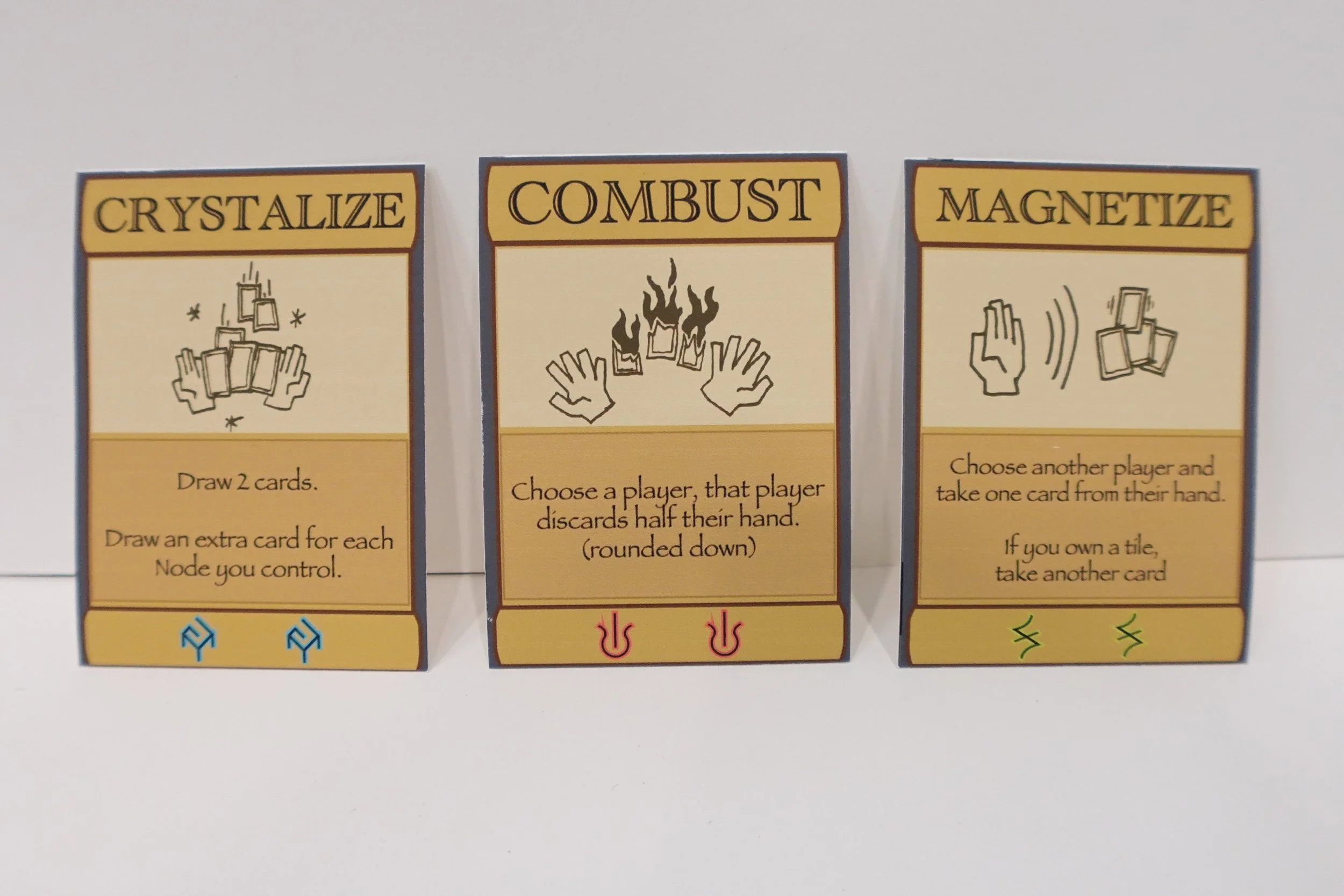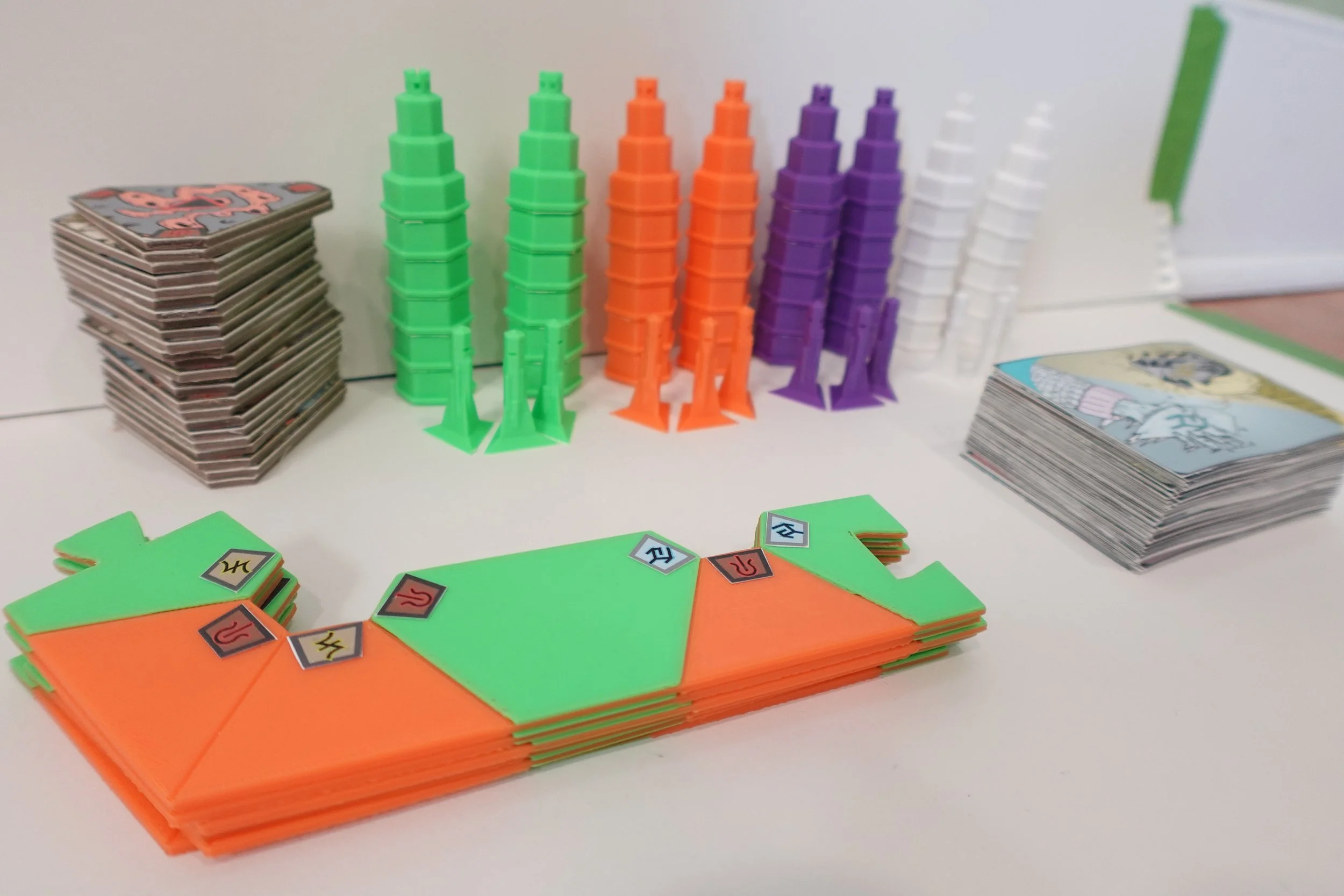Towers of Rune
This page is dedicated to documenting the design process of my board game: “Towers of Rune”
To the right is the current set of rules used to play the game.
Below are pictures and captions describing my thought process when designing pieces of the game
Design Process - Version 1.0
In the first design iteration I set out with a few goals when it came to creating a board game. I wanted a board game that was easy to understand and quick to begin playing. A game that was fast to put together and clean-up when you were finished. A game where your strategy had to change each time you played it.
When designing the pieces, I imagined towers that players would build on the board, and even be allowed to build on top of another player’s tower, allowing for a kind of conflict between players and their pieces.
I wanted to design a board that would be different every time you played. I took inspiration from the well known board game, “Settlers of Catan”, by Klaus Teuber. In his game the board is a large hexagonal shape comprised of smaller hexagon tiles that each represented a different landscape, or resource.
I took his design and tweaked it so that the tiles were more triangular, while having concave points on each end, so that when the tiles came together there would be a circular opening where the towers would inevitably sit.
I created a set of cards that would correspond with the colored corners on each of the tiles. These cards would serve as the resources used to build the towers on the map. The types of resources were things used in creating cathedrals or other types of place of worship, in this case it was [Stone] [Tile] [Stained Glass] & [Timber]. I didn’t have a cohesive idea for what players would be competing for when playing the game, but decided on a small narrative of little creatures trying to build as many towers of worship as tall as possible
Design Process - Version 2.0
Towers of Rune
In the second iteration of design, I wanted to accomplish the same original goals I set out in the first design, but in this version I wanted to have a succinct theme that players could quickly follow and understand. With that, I came up with ‘Towers of Rune’, a game in which wizards discover a new magical landscape full of wild magic. Players will use the wild magic they uncover to build towers and cast spells in order to gain control of sections of the map. If a player controls enough sections, they win the game.
After the first version, I decided to make a few changes to the player pieces, namely the towers. Firstly I shrunk everything down to less than half their original size in order to alleviate the strain of having to print many large pieces. Now I can print smaller pieces at a faster rate with less material used.
I also changed the towers to be hexagonal instead of circular, by doing this and also flattening the edges of the tiles, I have a design that allows the towers to sit more firmly in place.
Secondly I switched the top of the tower to being a universal design, instead of having different toppers for each player piece.
Lastly I included a secondary piece, which I have labelled as ‘obelisks’, and these pieces serve as indicators for when a player captures a tile
The tiles I designed to be 3 distinct landscapes that would produce their own type of magic. The 3 landscapes are the Lava Swamps, the Icy Mountains, and the Static Desert. These 3 landscapes produce Fire, Ice, and Lightning type magic in the form of Runestones, which are the main resource when playing the game.
In addition to the tiles, I was able to construct edge pieces that would hold the tiles in place and preserve the hexagonal shape of the board.
The cards used for the game are all set in a central deck. Players draw cards at the start of their turn to get more. The cards are split into two types: Runestones and Spells. Each card will be either 2 Runestones or 1 Spell
Ultimately I feel like this version of the board game has accomplished my goal of being able to quickly put together and clean-up. There is a narrative now attached to the pieces that seems easy to understand for players. However ultimately I feel like there is too much visual noise and will be a point of major change in the next iteration
